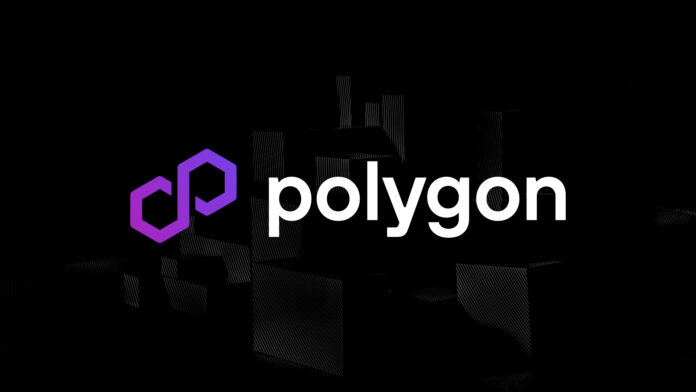Crypto infrastructure developer Polygon Labs has proposed a new, four-layered architectural design for its upcoming “Polygon 2.0” project.
The announcement, made on June 29, offers a detailed look at the planned infrastructure, which comprises four unique “layers” working in tandem to secure and scale networks built on the protocol. With a bridge aggregator set to make transactions “near-instant and atomic,” is poised to dramatically reshape the crypto industry.
Polygon 2.0: A Four-Layered Approach
The new proposal outlines the foundation of the project, the “staking layer,” which is currently in existence. This layer comprises a “validator manager” contract on Ethereum, along with an additional “chain manager” contract for each Polygon chain. Future Polygon chains will be able to form by launching new chain manager .
Built on top of this staking layer will be an “interoperability layer,” providing bridges to connect each Polygon chain via Ethereum. This layer will also feature an aggregator that combines from each bridge into one proof before sending it to Ethereum, enabling “seamless” bridge transactions and “dramatically reducing Ethereum gas consumption for proof verification,” according to the team.
Polygon Labs elaborates in its announcement:
“We believe this proposal can and should direct all Polygon protocol development efforts moving forward, serving both as the conceptual North Star and the formal development framework.”
The two remaining layers of Polygon 2.0 will include the current , which relies upon the Erigon Ethereum client, and a “proving layer” that will standardize the zero-knowledge-proof process across all Polygon chains.
A Future-Proof Infrastructure
Polygon isn’t the only network attempting to transform into a multi-chain ecosystem. Other developers like zkSync Era and Optimism are working on similar strategies, but Polygon 2.0’s unique four-layered approach sets it apart.
In a statement, the team promises more information on each layer in the future, stating:
“Polygon 2.0 consists of four protocol layers, each enabling an important process within the network: Staking Layer, Interop Layer, Execution Layer, Proving Layer.”
With the proposal now public, the network’s validators will need to approve it. Polygon 2.0’s vision, as expressed by the development team, is to establish “the value layer” of the internet, promising a more .
Just as the internet is an elastically scalable, unified environment for accessing information, Polygon 2.0 seeks to serve as an elastically scalable, unified environment for accessing value.
Parallels With Early Internet Innovations
With a vision of enabling an “Internet of Blockchains”, Polygon 2.0’s strategic design could revolutionize the scalability and interoperability of blockchain technology. to enhancing the tech stack and protocol layers supports the global shift towards decentralized systems, heralding a new era in digital innovation and resource management.
The suggested architecture of Polygon 2.0 is reminiscent of the Internet protocol suite, a modular, flexible, and that has become the backbone of our global digital ecosystem. Each layer in the proposed Polygon 2.0 is designed to facilitate a specific sub-process, streamlining the , updates, and potentially transforming the way we .
In the broader context of the blockchain space, this development reflects the industry’s collective pursuit of scalability, efficiency, and interoperability. As an increasing number of organizations turn to blockchain solutions for various applications, the necessity for adaptable, scalable, and unified frameworks becomes even more apparent. In providing such an architecture, Polygon 2.0 could significantly contribute to the blockchain ecosystem’s growth and the wider acceptance of decentralized solutions.
Disclaimer: This article is provided for informational purposes only. It is not offered or intended to be used as legal, tax, investment, financial, or other advice.
Credit: Source link






















 Bitcoin
Bitcoin  Ethereum
Ethereum  Tether
Tether  Solana
Solana  USDC
USDC  XRP
XRP  Lido Staked Ether
Lido Staked Ether  Toncoin
Toncoin  Dogecoin
Dogecoin  Cardano
Cardano  Shiba Inu
Shiba Inu  Avalanche
Avalanche  TRON
TRON  Wrapped Bitcoin
Wrapped Bitcoin  Polkadot
Polkadot  Bitcoin Cash
Bitcoin Cash  Chainlink
Chainlink  NEAR Protocol
NEAR Protocol  Polygon
Polygon  Litecoin
Litecoin  Fetch.ai
Fetch.ai  Internet Computer
Internet Computer  Uniswap
Uniswap  LEO Token
LEO Token  Dai
Dai  Render
Render  Ethereum Classic
Ethereum Classic  Hedera
Hedera  First Digital USD
First Digital USD  Aptos
Aptos  Pepe
Pepe  Cosmos Hub
Cosmos Hub  Mantle
Mantle  Cronos
Cronos  Filecoin
Filecoin  Immutable
Immutable  Wrapped eETH
Wrapped eETH  dogwifhat
dogwifhat  Stellar
Stellar  Stacks
Stacks  OKB
OKB  Renzo Restaked ETH
Renzo Restaked ETH  The Graph
The Graph  Optimism
Optimism  Arbitrum
Arbitrum  Arweave
Arweave  Bittensor
Bittensor 
